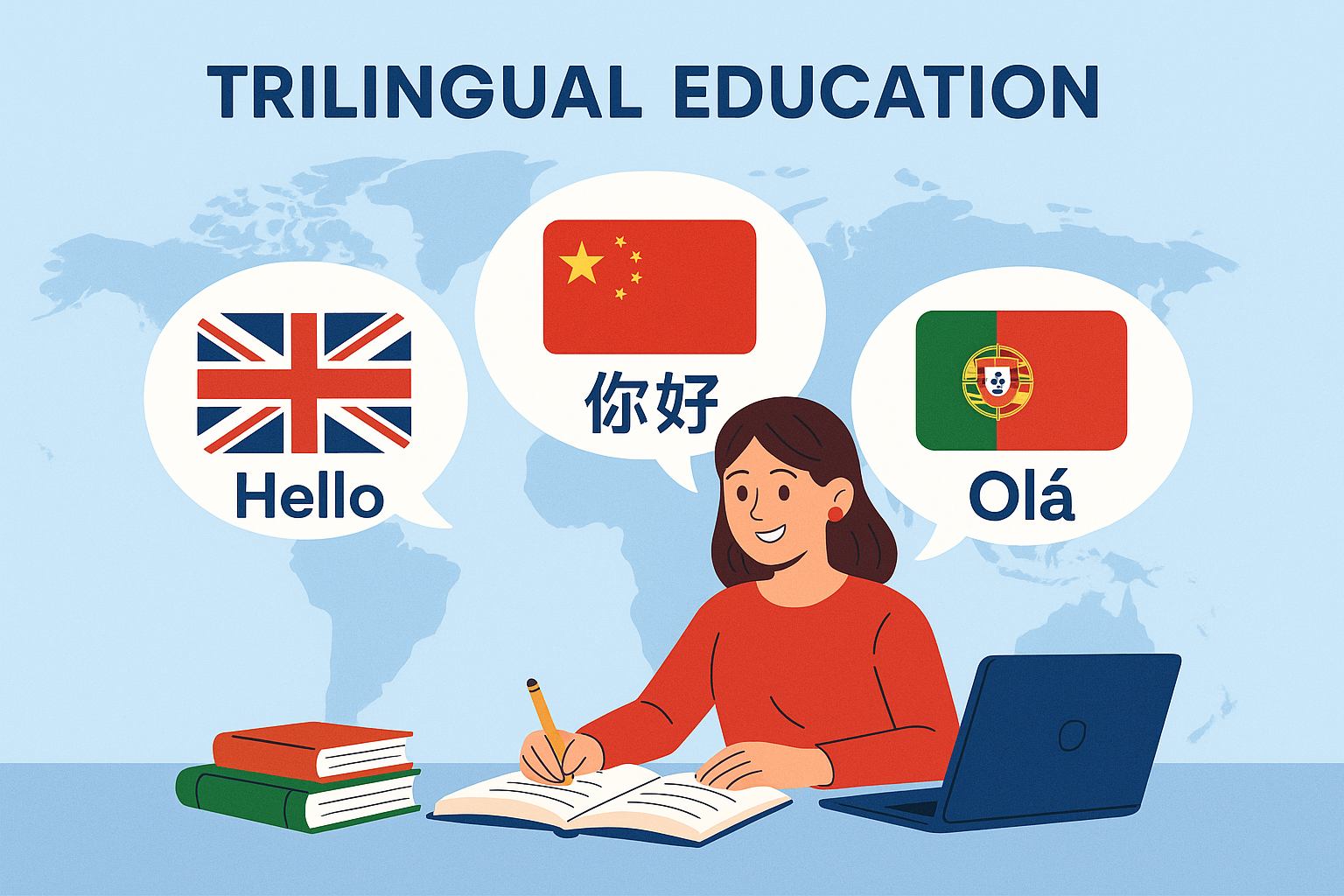- Trilingual: English | 中文 (Mandarin) | Português🔠 Level: Beginner |
🎯 Objective / Objetivo / 目标
In this first lesson, learners will:
-
Learn how to greet others formally and informally
-
Introduce themselves (name, age, country)
-
Ask basic questions like “What’s your name?” and “Where are you from?”
-
Understand cultural etiquette in greetings across the 3 languages
Section 1: Basic Greetings | Saudações Básicas | 基本问候
Greeting someone properly is the foundation of good communication. Each culture has its own ways of greeting, from handshakes to bows.
| English | Chinese (中文) | Pinyin | Português |
|---|---|---|---|
| Hello | 你好 | Nǐ hǎo | Olá |
| Hi | 嗨 | Hāi | Oi |
| Good morning | 早上好 | Zao shàng hǎo | Bom dia |
| Good afternoon | 下午好 | Xià wǔ hǎo | Boa tarde |
| Good evening | 晚上好 | Wǎn shàng hǎo | Boa noite |
| Goodbye | 再见 | Zài jiàn | Tchau / Adeus |
| See you later | 回头见 | Huí tóu jiàn | Até logo |
Explanation:
-
In Chinese, tone is essential. For example, “hǎo” (好) means “good.” If the tone changes, the meaning changes.
-
In Portuguese, greetings vary slightly between Brazil and Portugal, but these are universally understood.
-
In English, “Hi” is informal, while “Hello” can be used in both casual and polite situations.
🙋 Section 2: Self-Introduction | Apresentação Pessoal | 自我介绍
When meeting someone new, it’s polite to say your name, where you’re from, and sometimes your age.
👤 English:
My name is Maria.
I’m 28 years old.
I’m from Brazil.
Nice to meet you!
🀄 Chinese (Simplified): Pinyin:
我叫玛丽亚。Wǒ jiào Mǎlìyà.
我今年28岁。Wǒ jīnnián èrshíbā suì.
我来自巴西。Wǒ láizì Bāxī.
很高兴认识你!Hěn gāoxìng rènshí nǐ!
🇵🇹 Português:
Eu me chamo Maria.
Tenho 28 anos.
Sou do Brasil.
Prazer em te conhecer!
Explanation:
-
“我叫…” (Wǒ jiào) means “I am called…” in Chinese. It’s a polite way to state your name.
-
In Portuguese, you can also say “Meu nome é…” which is like “My name is…”
-
Age in Chinese: “我…岁” (Wǒ … suì), where you insert the number in the middle.
Section 3: Asking Questions | Fazendo Perguntas | 提问
Here are the key questions for a simple first conversation.
| English | Chinese (中文) | Pinyin | Português |
|---|---|---|---|
| What’s your name? | 你叫什么名字? | Nǐ jiào shénme míngzi? | Qual é o seu nome? |
| How old are you? | 你几岁? | Nǐ jǐ suì? | Quantos anos você tem? |
| Where are you from? | 你来自哪里? | Nǐ láizì nǎlǐ? | De onde você é? |
| Nice to meet you! | 很高兴认识你! | Hěn gāoxìng rènshí nǐ! | Prazer em te conhecer! |
✅ Use these to begin your first multilingual conversations!
🗨️ Section 4: Sample Dialogue | Diálogo | 对话
Let’s see how everything comes together in a short exchange.
🔄 English:
A: Hi! My name is James. What’s your name?
B: Hello James! I’m Mei.
A: Nice to meet you. Where are you from?
B: I’m from China. And you?
A: I’m from Mozambique.
🀄 Chinese:
A: 嗨!我叫詹姆斯。你叫什么名字?
A: Hāi! Wǒ jiào Zhānmǔsī. Nǐ jiào shénme míngzi?
B: 你好,詹姆斯!我叫美。
B: Nǐ hǎo, Zhānmǔsī! Wǒ jiào Měi.
A: 很高兴认识你。你来自哪里?
A: Hěn gāoxìng rènshí nǐ. Nǐ láizì nǎlǐ?
B: 我来自中国。你呢?
B: Wǒ láizì Zhōngguó. Nǐ ne?
A: 我来自莫桑比克。
B: Wǒ láizì Zhōngguó. Nǐ ne?
🇵🇹 Português:
A: Oi! Eu me chamo James. Qual é o seu nome?
B: Olá, James! Eu sou a Mei.
A: Prazer em te conhecer. De onde você é?
B: Eu sou da China. E você?
A: Eu sou de Moçambique.
🧠 Section 5: Vocabulary Boost
| English | Chinese (中文) | Pinyin | Português |
|---|---|---|---|
| Name | 名字 | míngzi | Nome |
| Age | 年龄 | niánlíng | Idade |
| Country | 国家 | guójiā | País |
| Brazil | 巴西 | Bāxī | Brasil |
| China | 中国 | Zhōngguó | China |
| Mozambique | 莫桑比克 | Mòsāngbǐkè | Moçambique |
| Meet (someone) | 认识 | rènshí | Conhecer |
🎓 Cultural Tips
-
In China, greetings are often followed by a light bow or nod. Avoid handshakes unless the other person initiates.
-
In English-speaking cultures, eye contact and a firm handshake are common.
-
In Portuguese-speaking countries, greetings are warm — often with two kisses (Brazil) or a handshake (Portugal/Mozambique).
🧠 Remember: tone and body language are part of communication too!
🏁 Conclusion
Congratulations on finishing your first multilingual lesson! Now you can:
✅ Greet someone in English, Chinese, and Portuguese
✅ Introduce yourself clearly
✅ Ask basic questions to start a conversation
✅ Understand cultural aspects of greetings
📚 Practice Task
-
Write your self-introduction in all 3 languages.
-
Record yourself saying the dialogue aloud.
-
Use flashcards for vocabulary review.
